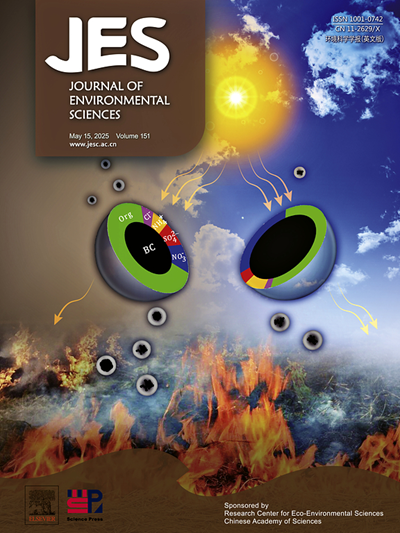Groundwater usage characterization in a tribal stretch infected with chronic kidney disease of unknown etiology (CKDu)
IF 5.9
2区 环境科学与生态学
Q1 ENVIRONMENTAL SCIENCES
引用次数: 0
Abstract
This reconnaissance study was carried out in urgency as residents complained of groundwater contamination in a tribal stretch infected with chronic kidney disease of unknown etiology in central India where at least 100 people have already died and more than 300 hospitalized. Multi-indexing techniques were used to evaluate groundwater quality for drinking, irrigation, and industrial purposes. The comprehensive water quality index (CWQI) classifies ∼52 % of the 27 collected samples suitable for drinking, and ∼37 % partially suitable pending certain treatment. While the relative abundance of chemical parameters stands at Ca2+ > Na+ > Mg2+ > K+ for cations and HCO3− > Cl− > NO3− > SO42− > F− for anions, the groundwater in the area suffers from general hardness, nitrate, and fluoride contamination. It is hypothesized that fluoride ions possibly couple with excess alkaline earth elements and anions to form metal-complexes inviting Hofmeister phenomena to act in the human kidneys through ingested groundwater. For agricultural water quality assessment, historically developed 10 irrigation indices have been used that classify most groundwater samples suitable for agriculture. Corrosivity indices reveal that the groundwater has moderate to high corrosive affinity. Although the results of the irrigation and corrosivity indices are coherent with CWQI water classes, the use of so many indices based on certain chemical parameters to evaluate water samples for agricultural purposes delivers mixed results and confuses workers about the actual water quality in the field. This calls for the development of a new, robust, and comprehensive standard for appraisal of irrigation water quality that could be used uniformly worldwide.

一个部落感染不明原因慢性肾病(CKDu)的地下水使用特征
由于居民抱怨印度中部一个部落地区的地下水受到污染,感染了病因不明的慢性肾病,至少已有100人死亡,300多人住院,因此紧急开展了这项调查研究。采用多指标技术对饮用、灌溉和工业用地下水水质进行评价。综合水质指数(CWQI)将采集的27个样本中约52%分类为适合饮用,约37%分类为部分适合,有待于某些处理。而化学参数的相对丰度为Ca2+ >;Na +比;Mg2 +比;K+为阳离子和HCO3−>;Cl−祝辞3号−祝辞SO42−祝辞F−表示阴离子,该地区的地下水受到一般硬度、硝酸盐和氟化物的污染。假设氟离子可能与过量的碱土元素和阴离子偶联形成金属配合物,导致霍夫迈斯特现象通过摄入地下水在人体肾脏中起作用。在农业水质评价中,历史上开发的10个灌溉指标被用来对大多数适合农业的地下水样本进行分类。腐蚀性指标表明,地下水具有中高的腐蚀性亲和力。虽然灌溉和腐蚀指标的结果与CWQI水的等级是一致的,但使用基于某些化学参数的如此多的指标来评估农业用水的水样,结果好坏不一,使工人对实地的实际水质感到困惑。这就要求制定一种新的、可靠的、全面的灌溉水质评价标准,以便在世界范围内统一使用。
本文章由计算机程序翻译,如有差异,请以英文原文为准。
求助全文
约1分钟内获得全文
求助全文
来源期刊

Journal of Environmental Sciences-china
环境科学-环境科学
CiteScore
13.70
自引率
0.00%
发文量
6354
审稿时长
2.6 months
期刊介绍:
The Journal of Environmental Sciences is an international journal started in 1989. The journal is devoted to publish original, peer-reviewed research papers on main aspects of environmental sciences, such as environmental chemistry, environmental biology, ecology, geosciences and environmental physics. Appropriate subjects include basic and applied research on atmospheric, terrestrial and aquatic environments, pollution control and abatement technology, conservation of natural resources, environmental health and toxicology. Announcements of international environmental science meetings and other recent information are also included.
 求助内容:
求助内容: 应助结果提醒方式:
应助结果提醒方式:


